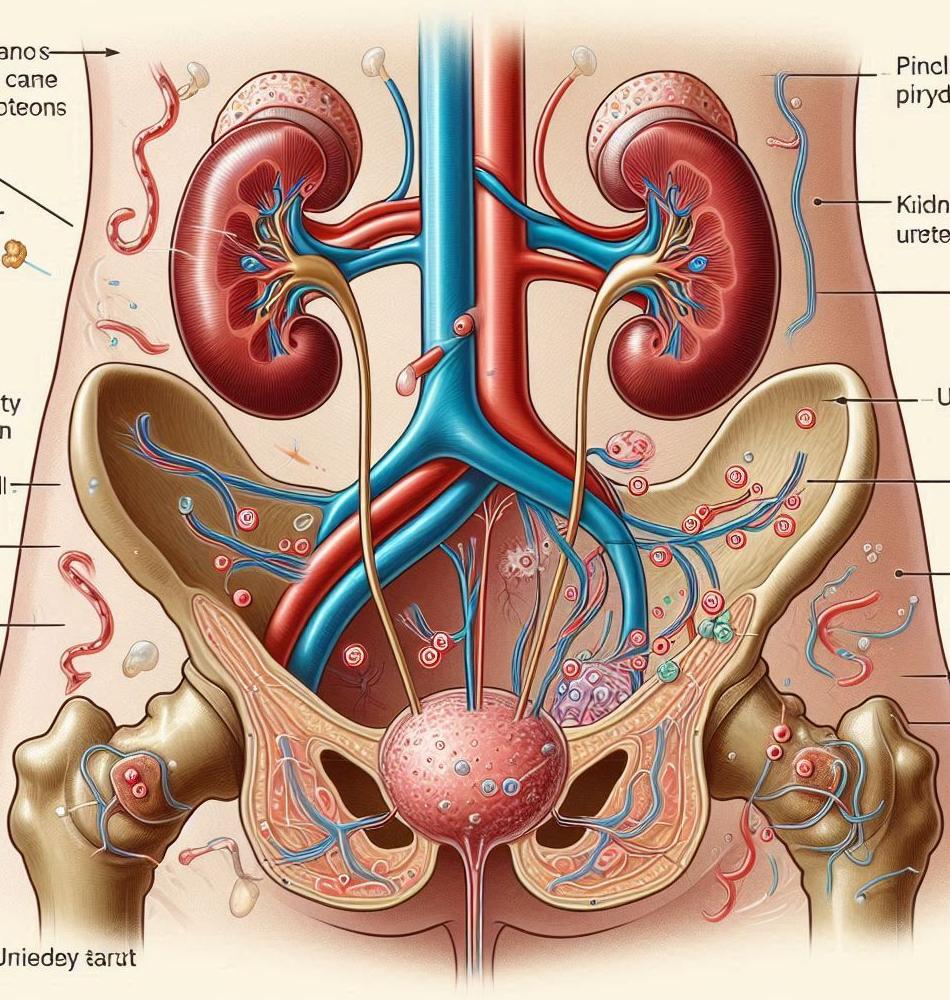Understanding Kidney Infections: Pathways to Infection and Prevention 🦠
Kidney infections, scientifically referred to as pyelonephritis, can be debilitating and painful. They occur primarily when bacteria enter the kidneys from the urinary tract. Understanding how these infections develop, along with their symptoms and prevention strategies, unveils the complexities behind this condition and reminds us of the importance of kidney health. This article will delve into this critical health issue, detailing how you can either inadvertently invite this ailment into your life or fiercely protect against it.
How Kidney Infections Happen 🦠
Kidney infections do not appear out of thin air; they follow a series of events that facilitate bacterial invasion. Understanding these pathways can help you identify risk factors and symptoms. Let’s explore the common routes through which kidney infections can develop.
The Invasion Strategy
The most prevalent way bacteria reach the kidneys is through the urinary tract. The pathway starts in the bladder and can ascend to the kidneys, leading to an infection. Here are a few steps outlining how it happens:
- Bacterial Colonization: Bacteria, often from the intestines, can enter the urethra.
- Upstream Migration: Once they colonize the bladder, some bacteria can travel up the ureters to infect the kidneys.
- Infection Establishment: If conditions allow, these bacteria settle in the kidneys, leading to inflammation and infection.
What Makes You Susceptible? 🤔
Not everyone is equally at risk of developing a kidney infection. Certain factors can heighten your chances significantly:
- Women are more susceptible due to their shorter urethra.
- Individuals with urinary tract abnormalities or blockages.
- People with weakened immune systems, such as those with diabetes.
- Those who frequently use catheters for urinary drainage.
- Individuals who do not stay adequately hydrated, leading to concentrated urine.
Recognizing Symptoms of a Kidney Infection 🩺
Once a kidney infection sets in, it can manifest through various symptoms. Awareness of these signs enables early intervention, preventing the infection from worsening. Watch out for the following:
Common Symptoms
- Persistent lower back pain, often on one side.
- Heightened fever and chills.
- Nausea and vomiting.
- Painful urination accompanied by cloudy or strong-smelling urine.
- Frequent urges to urinate, even when little comes out.
When to Consult a Doctor?
If any of the aforementioned symptoms appear, it is crucial to seek medical attention promptly. Delaying treatment can lead to complications that may compromise kidney function.
Diagnosis of Kidney Infections 📋
When you approach a healthcare provider about potential kidney infection symptoms, expect a thorough evaluation, which may involve:
- A physical exam to assess symptoms
- Laboratory tests to check for bacterial presence in urine
- Imaging tests like ultrasounds if necessary to visualize kidney condition
Gold Standard Diagnosis
The definitive diagnosis often relies on urine culture tests. This procedure helps identify specific bacteria, guiding tailored treatment options.
Treatment Options for Kidney Infections 💊
Once diagnosed with a kidney infection, the primary treatment involves antibiotics to eliminate the offending bacteria. The healthcare provider may prescribe a regimen based on the severity and specific bacteria involved. Here are some common treatment strategies:
- Oral antibiotics for mild to moderate infections.
- Intravenous antibiotics for severe infections requiring hospitalization.
- Pain relief medications as needed to manage discomfort.
Home Remedies and Supportive Care
In addition to prescribed treatments, there are several home remedies and supportive care measures that can assist in recovery, such as:
- Staying well-hydrated by drinking plenty of fluids.
- Using heating pads on painful areas to ease discomfort.
- Practicing good hygiene to prevent further urinary tract infections.
Preventing Kidney Infections: Building Defenses ⚔️
Now that we are aware of the pathways to kidney infections, focusing on preventative measures is paramount for maintaining kidney health. Here are your keys to prevention:
Essential Preventive Strategies
- Drink sufficient fluids, especially water, to flush out bacteria.
- Urinate when you feel the urge; don't hold it in.
- Always wipe front to back to reduce bacteria spread.
- Urinate after intercourse to help expel any bacteria.
- Avoiding irritants like harsh soaps and feminine hygiene sprays.
Clinical Considerations
If you have recurrent kidney infections, consult with a healthcare professional. There may be underlying conditions requiring specific management strategies.
Frequently Asked Questions ❓
In understanding kidney infections, several questions often arise:
- What are the main causes of kidney infections?
- Are kidney infections contagious?
- Can kidney infections lead to more severe health issues?
- What are the best hydration strategies to prevent kidney infections?
- How long does it take for kidney infections to resolve with treatment?
Conclusion: Protecting Your Kidney Health 🚀
Kidney infections can wreak havoc on your health but understanding their causes and how they progress empowers you to take control. By recognizing symptoms and adhering to preventive measures, you can significantly reduce your risk of developing a kidney infection. Stay vigilant and prioritize your kidney health, ensuring any signs of infection are promptly addressed with professional assistance. Remember, a well-informed and proactive approach can make all the difference in maintaining optimal kidney health. Let's cherish those vital organs and keep the infections at bay!
.png)






